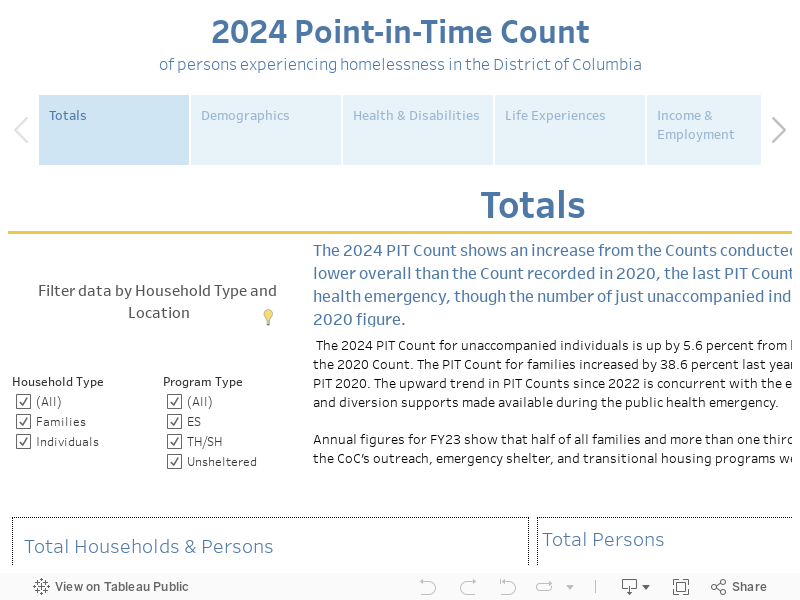On any given night in the District of Columbia there are 3,960 single persons and 1,656 adults and children in 539 family households who are experiencing homelessness.
These households include:
-
-
900 unsheltered persons (i.e. persons “on the street”);
-
3,308 persons in Emergency Shelters; and
-
1,408 persons in Transitional Housing facilities.
-
Below are some key factors that affect a person's vulnerability for homelessness.
Demographics
A person’s age, ethnicity, gender, and race will all affect how they engage the homeless services system.
Health and Disabilities
Overall, the health of individuals still being served by the homeless services system is poor.
Experiences
A person’s experience with domestic violence, the foster care system, and institutional settings can affect how they interact with the homeless services system.
Income & Employment
Most individuals experiencing homelessness are unable to obtain an income that can support their housing either through employment or benefit programs.
Subpopulations
While the number of transitional age youth, veterans, and those who identify as LGBTQ+ is relatively small, understanding the ways in which these populations engage with the homeless services system is critical.
Dashboards
Explore our data dashboards to better understand the District’s CoC system performance and the demographics of those experiencing homelessness.
2024 DC Point-in-Time Count Dashboard
Central Question: How many persons and families are served on a single night and what are their characteristics?
Update Frequency: Annually
Description: The annual Point-in-Time Count creates a snapshot of the scope and scale of homelessness on a single night and is required of all communities receiving homelessness assistance funding from the U.S. Department of Housing and Urban Development (HUD).
FY23 Key Performance Indicators (KPI) Dashboard
Central Question: How is our system performing?
Update Frequency: Annually
Description: To monitor performance on the District’s goals for the CoC, the ICH, DHS, and TCP established the CoC’s KPIs – system wide performance metrics that track progress made toward Homeward DC’s vision of making homelessness rare, brief, and non-recurring.


